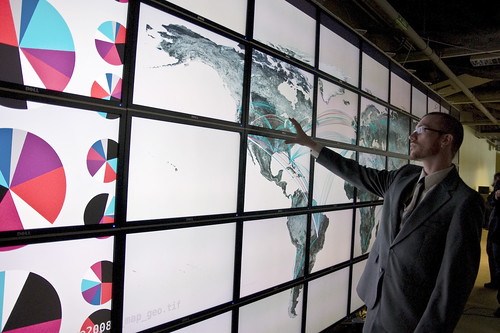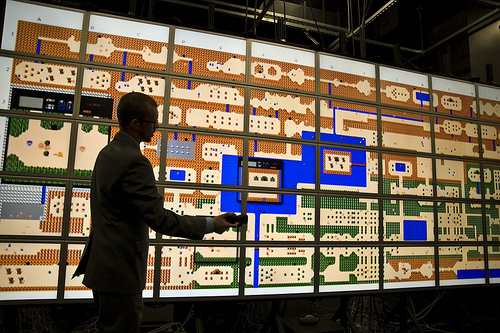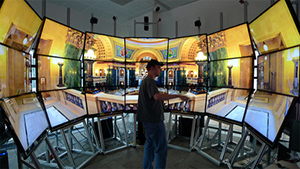Tabletop Conference in Banff
Martin was impressed by the iLabat the University of Calgary. He also mentioned the work of researchers from the Media Computing Groupat RWTH Aachen University known for SLAP, and the Media Interaction Lab at the Upper Austria University of Applied Sciences, known for CRISTAL.
Info about Martin from his website:
"Martin Kaltenbrunner, co-founder of Reactable Systems, is a Ph.D. candidate at the Pompeu Fabra University in Barcelona, Spain. His research concentrates on tangible user interfaces and human computer interaction in general, topics he has been also teaching at the Kunstuniversität Linz, Universitat Pompeu Fabra and UCP Porto. Recently he has been mainly working on the human computer interaction concepts of the Reactable - an electronic musical instrument with a tangible user interface. He is author of the open source tangible interaction framework reacTIVision and the related TUIO protocol, which has been widely adopted for open source multi-touch applications."
RELATED
Previous Posts
For an overview of what Interactive Tabletops and Surfaces is about, take a careful look of the video from the 2008 conference, credits listed below:
Video Credits (in order of appearance, Tabletop 2008):
1. System Design for the WeSpace: Linking Personal Devices to a Table-Centered Multi-User, Multi-Surface Environment. Jiang, H., Wigdor, D., Forlines, C., Shen, C.
2. Group Coordination and Negotiation through Spatial Proximity Regions around Mobile Devices on Augmented Tabletops, Kray C., Rohs, M., Hook, J. Kratz, S.
3. Tabletop AgilePlanner: A Tabletop-Based Project Planning Tool for Agile Software Development Teams
Wang, X., Maurer, F.
4. TableTrays: Temporary, Reconfigurable Work Surfaces for Tabletop Groupware. Pinelle, D., Stach, T., Gutwin, C.
5. IntuPaint: Bridging the Gap Between Physical and Digital Painting. Vandoren, P., Laerhoven, T., Claesen, L., Taelman, J., Raymaekers, C., Reeth, F.
6. Experiences with Building a Thin Form-Factor Touch and Tangible Tabletop. Izadi, S., Butler, A., Hodges, S., West, D., Hall, M., Buxton, B., Molloy, M.
7. ShapeTouch: Leveraging Contact Shape on Interactive Surfaces, Cao, X., Wilson, A., Balakrishnan, R., Hinckley, K., Hudson, S.
8. PocketTable: Mobile Devices as Multi-Touch Controllers for Tabletop Application Development, Hafeneger, S., Weiss, M., Herkenrath, G., Borchers, J.
9. Presenting using Two-Handed Interaction in Open Space, Vlaming, L., Smit, J., Isenberg, T.
10. DepthTouch: Using Depth-Sensing Camera to Enable Freehand Interactions on and Above the Interactive Surface Benko, H., and Wilson, A.
11. Pokey: Interaction Through Covert Structured Light. Wren, C., Ivanov, Y., Beardsley, P., Kaneva, B., Tanaka, S.
12. Creating Malleable Interactive Surfaces using Liquid Displacement Sensing. Hilliges, O. Kim, D., Izadi, S.
13. Collaborative Interaction and Integrated Spatial Information and Services in Disaster Management, Fruijtiera, S., Dulkb, P., Diasc, E.















